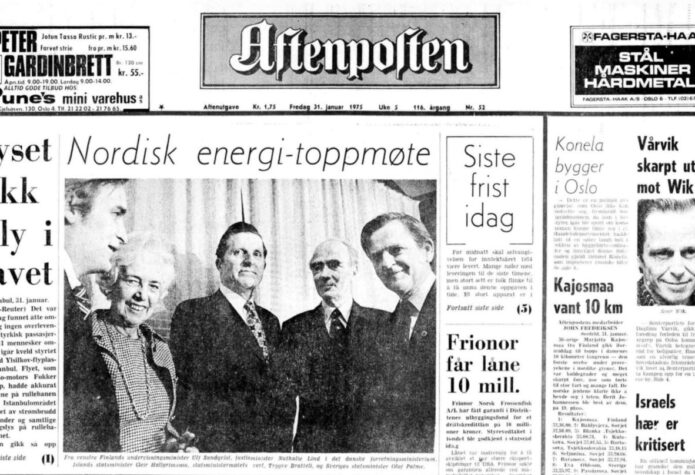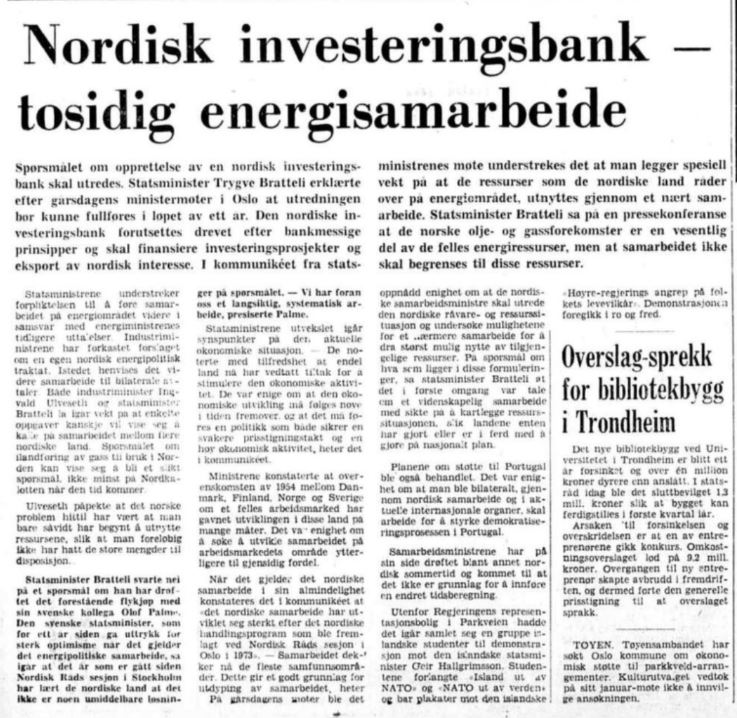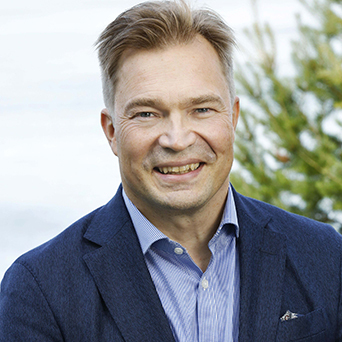Oslo 1975: Establish NIB “snarest mulig”!

By Jukka Ahonen, Head of Communications at the Nordic Investment Bank.
It sometimes pays off to take a deeper look into the archives. That’s what I did before our Board meeting in Oslo.
I quickly understood that Norway and Oslo played an important role when the Nordic Investment Bank was established almost 50 years ago.
In January 1975, the prime minister of Norway, Trygve Bratteli, hosted a meeting for his peers from other Nordic countries in Oslo. The establishment of a new institution, NIB, was on the agenda. The idea received support from all countries, and the decision was to start preparations “snarest mulig” (as soon as possible).
An important background for the “urgency” was the oil crisis. Member countries were expected to have significant deficits in their current accounts for years to come. NIB was seen as tool to attract capital for important investment projects.
However, Norway was in a different position in this case. The country was at the crossroads. Norway had just discovered oil and was expecting a current account surplus in future years. So Oslo saw that NIB could be a vehicle for channelling capital not only from other parts of the world but also to balance flows within the Nordic region.
A working group was established after the prime ministers gave it the green light. Another Norwegian, Hermod Skånland, a Director of Norges Bank, became the group’s chair. He lost no time, delivering a report “snarest mulig” in May. It was then formally proposed to establish the Bank by the Nordic Council of Ministers (in Norwegian), and NIB was finally established in December 1975.
Many key pillars of NIB continue to be based on Hermod Skånland’s work. His picture hangs on the wall at NIB’s Headquarters. He served as the first chair of the Board of Directors.

Facsimile: Aftenposten
Both Bratteli and Skånland are iconic names in Norwegian political and economic history. It is less known that they were also NIB’s Norwegian founding fathers.
NIB commenced operations in Norway in 1977. The Bank has since provided EUR 12.6 billion (NOK 147.5 billion) to fund more than 370 projects. In recent years, NIB has financed electricity distribution and transmission networks, transport electrification, and renewable energy generation. NIB has also contributed to the development of hydro and wind power projects. In 2024, NIB signed the first InvestEU loan in Norway.
Almost 50 years after the prime ministers’ meeting in Oslo, Norway is again at the crossroads.
Norway’s energy dilemma arises from the contrast between Norway’s reliance on fossil fuels for export revenue and its commitment to renewable energy and environmental sustainability domestically. The challenge is now to recalibrate the economy for the green transition, aiming for a 90 to 95% cut in greenhouse gas emissions from 1990 levels by 2050. NIB will continue to support Norway on this journey.
